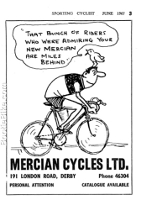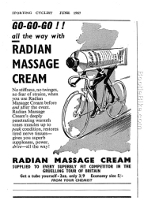So you want to ride to work
Be prepared and avoid some heartbreak
So you’re thinking about riding to work. You’re going to get fit, revel in the convenience and save lots of time and money. And enjoy yourself doing so. After all, riding a bike is fun. Think of the happy times you’ve had riding and your mind will drift back to sunny afternoons cruising around the park or youthful expeditions beyond the neighbourhood. Great idea – why not relive that fun while achieving a useful purpose? You'll be healthier and happier and doing the world a favour…
Well, the reality is it ain't no ride in the park
This all sounds so idyllic it's no wonder the thought of dusting off the old pedly and cruising to work crosses the minds of even the most sedentary amongst us. But those who do try it are often put off by their first taste of reality, the fact that while cycling to work can be very pleasant indeed, it’s just as likely to be a cold, wet, solitary experience.  Think about that, and forget about the riding around the park stuff; cycling for transport is a serious business, and it’s best considered in relation to the alternatives: driving, motorcycling, public transport or walking. The sad fact is you’ll only make a habit of riding to work if it weighs up as the least unattractive option. And as with anything, you'll incur the costs as well as the benefits of your choice, so if you want the benefits of cycling you’ll have to earn them.
Think about that, and forget about the riding around the park stuff; cycling for transport is a serious business, and it’s best considered in relation to the alternatives: driving, motorcycling, public transport or walking. The sad fact is you’ll only make a habit of riding to work if it weighs up as the least unattractive option. And as with anything, you'll incur the costs as well as the benefits of your choice, so if you want the benefits of cycling you’ll have to earn them.
Will you ride in the rain?
Still interested? Well, you can now consider some of the logistical issues to be faced before you start. Firstly, consider your health and fitness, and if in doubt seek medical advice. Having got that out of the way, one of the most basic decisions you’ll make is whether or not you’re willing to ride in the rain. This sounds so simple! But like so much in this business, it's fraught with ins and outs. The weather may be fine in the morning, but what if it's raining, or more likely threatening to rain, when it's time to go home? Would you take the chance? If the threat of rain scares you into getting the bus one way, then you'll be getting the bus for the return trip too, so you'll miss two cycling trips. And, as things would have it, on that return trip you'll likely be looking out the bus window on a beautiful sunny day…
If you choose to not ride in the rain this sort of decision will be on your mind a lot. You’ll be looking out the window each morning, analysing weather reports (scattered showers?) and forever vacillating between getting out there or not for fear of getting wet. And as often as not you’ll be back in your car or on the bus. Try it and see which way you go. And one more thing, if you do decide to ride in the rain you may want to invest in some wet weather gear.
Will you ride on the road?
Another decision is the route to take. This can be quite ‘scientific’, as cyclists have more options than motorists; your cycling route could be radically different to the way you would drive. You can find a route using any of a number of online route planners (e.g. Bikely), but there’s no avoiding the need for a ‘dry run’ or two before you settle on the one you like. And only you can decide on how much exposure to motor traffic you’re willing to accept. You’ll likely be refining your route over an extended period before you have it nailed. If you live deep in the suburbs you may have to mix your cycle commuting with another mode of transport. In this case you'd need a folding bike you can take on the train or pop in the car boot.
What will you do when you get a flat tyre?
You’ll have to decide on what to do when you get a flat tyre or a mechanical fault. Sooner or later you'll be in this situation, so think about it now. Will you attempt to fix it on the spot? Walk it to the closest bike shop? Chain it to a post and come back for it with your car? If you plan to fix flats by the roadside you’ll need to carry tools and a spare tube, and if you want to leave the bike there you'll need a decent chain or cable lock ('though you should have one anyway so you can stop at the shops on the way home). If you're smart you'll do all you can to minimise your chances of getting a flat. Or you could get solid tyres, and never have to worry about getting a flat again…
Where will you wash, and where will you store your gear?
If you are likely to work up a sweat on your way to work you’ll need somewhere to wash and change into your work clothes. And a locker to store those clothes, along with all the other odds and sods you'll suddenly discover you can't live without. In many places this is a workplace requirement, but if this isn't the case you may have to look around for a place nearby that does have them, such as a gym. You’ll also need somewhere to securely leave your bike. If you leave it in a place accessible to the public you’ll definitely need a lock, and you won’t be able to ride the sort of bike that appeals to thieves.
What sort of bike will you ride?
A good commuter bike will be safe, dependable, low maintenance and practical – a vehicle. If you take up regular cycle commuting you will soon be looking for such a bike, but while you’re just trying it out all you need is something that will get you there and back for long enough to decide. Unfortunately, chances are the dusty old banger in the corner of the shed, the one you haven’t ridden for  two years, won't even be up to that. A seldom-used bike is neither safe nor trouble-free. Unless you're very handy, you should take it to your friendly local bike shop for a service before you hit the road. Some beginners go to a discount mega mart and buy a bike that's so cheap and nasty it's not worthy of the name. This is a mistake many of us make – but only once. Those things are made to be sold, not ridden. Anyone seeking reliable transport will very quickly write off such junk and buy something worth having.
two years, won't even be up to that. A seldom-used bike is neither safe nor trouble-free. Unless you're very handy, you should take it to your friendly local bike shop for a service before you hit the road. Some beginners go to a discount mega mart and buy a bike that's so cheap and nasty it's not worthy of the name. This is a mistake many of us make – but only once. Those things are made to be sold, not ridden. Anyone seeking reliable transport will very quickly write off such junk and buy something worth having.
You’ll have to hunt around for something suitable, as most contemporary bikes are primarily intended for sporting or recreational use. However, there is a place where things aren't like that. In the Netherlands they never did stop using bikes for everyday transport, and it shows in their bikes. The typical Dutch bike is very practical, and has a very upright, 'sit up and beg' riding position that suits a laid back riding style. If that appeals to you it could be just what you need, but keep in mind that much of the Netherlands is flat, and their bikes are made accordingly.
Whatever bike you choose, make sure it has the practicalities needed to make it a dependable, low maintenance commuter. These include mudguards, a chainguard, (or Chain Wrap, chaincase or Chainglider), a carry rack, a decent bell, lights and heavy duty tyres to minimise punctures. (It's worth doing some homework when selecting tyres, so ask around.) As for mudguards, they don't just help keep you and the bike clean and dry; they also prevent mud from being sprayed into the mechanicals  of your bike. Chaingliders/wraps/cases should save you getting grease on your leg when you brush up against the chain, and they keep the chain clean from dust and dirt/mud thrown up from the road. Keeping dirt out of the chain (and the lubrication in) reduces the need for maintenance and your bike stays cleaner.
of your bike. Chaingliders/wraps/cases should save you getting grease on your leg when you brush up against the chain, and they keep the chain clean from dust and dirt/mud thrown up from the road. Keeping dirt out of the chain (and the lubrication in) reduces the need for maintenance and your bike stays cleaner.
You should also consider the sort of brakes you need. Most bikes have rim brakes, which chew up your bike's wheels (imagine that on a car!), clog up with mud and require frequent adjustment. Common alternatives include disc brakes (which, being exposed, still clog up with mud) and the fully enclosed types: the coaster ('back pedal', on the rear only) and the internal expanding (drum or 'roller') brakes.
Importantly, you should consider equipping your commuter vehicle with an internal gear hub instead of a derailleur. Some bikes are available with a belt drive or a shaft drive, and these are well worth considering. The Bootiebike Bridgestone Picnica has a belt drive, the very first of its kind, and it works a treat. Newer belt drives, with the benefit of 30 years of development, are doubtless much better again.
When you go looking for your commuter bike, don't expect the bike shop salesperson to steer you in the right direction, as the concept of a truly practical, low maintenance bike is still alien to much of the trade (but with an increasing number of honourable exceptions). Do your homework, ask the right questions, insist on what you really want, and it will be possible to obtain a machine that meets your needs.
How will you keep your bike roadworthy?
Once you've found your bike and start using it you'll have to look after it. Your commuter bike is a vehicle, not a recreational machine, and you will depend upon it. Even a low maintenance bike will need some regular servicing to keep it safe and reliable, just like your car. If you don’t do your own servicing then regular visits to your local bike shop will be an absolute necessity.
Wow, that sounds like a lot to think about, doesn't it? You must be thinking it's a wonder anyone cycle commutes at all. Well, by reading this far you’re probably keener than most, and you've made a start. The stuff you’ve been reading here is the sort of thing most new cyclists find out piecemeal, the hard way, and most are put off. Maybe it will be different for you and you'll continue cycling to work over the longer term. Doing so would only be a small change in the scheme of things, but somehow you'll never be quite the same.
Further reading: Derailleurs, internal gear hubs and the transport cyclist
